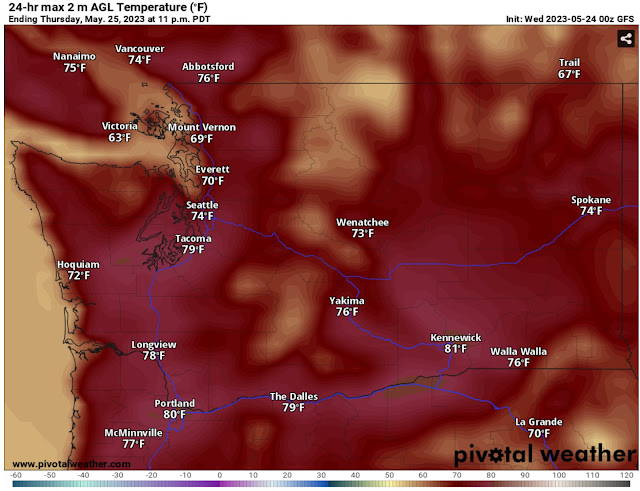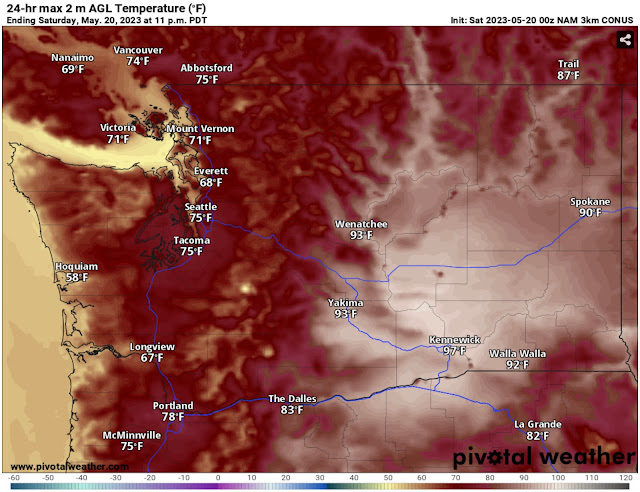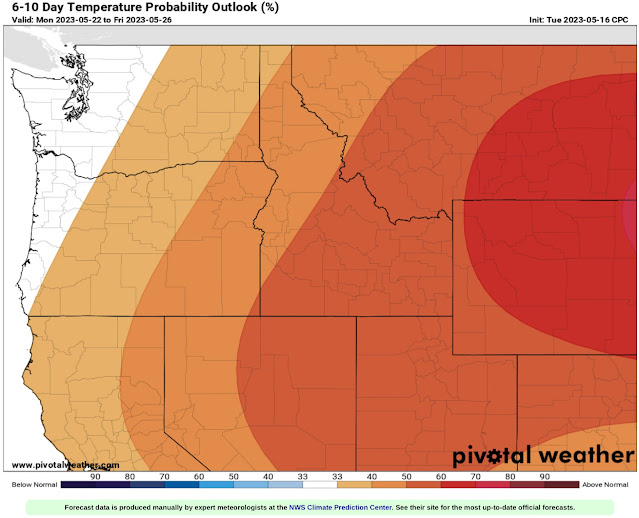FastCast—Wednesday, May 31 to Sunday, June 4:
The past few days have been cooler than normal (by a couple degrees) due to a persistent marine layer that has moved in each morning, burning off in mid-afternoon. This has kept highs in the mid 60s to low 70s, near average for late May. Similar conditions will prevail on Wednesday, with mostly cloudy skies and highs in the low to mid 60s, potentially into the upper 60s if clouds burn off. Thursday will start off cloudy and become sunny, with highs reaching the upper 60s to low 70s. Additionally, Wednesday and Thursday morning’s lows will be on the chilly side, likely in the low to mid 40s. Conditions will become mostly sunny for Friday through Sunday, with highs in the mid to upper 70s, with some areas reaching the low 80s, mainly away from the water. From Thursday to Sunday, a stronger breeze off the water will bring cooler highs. Expect lows through Sunday to remain in the mid to upper 40s. There is a potential for warmer conditions into next week…so stay tuned!
————————————————————
Continue reading the full blog below!
Another day of morning to early afternoon clouds and potential afternoon sun is ahead on Wednesday. Below is the GFS forecast for highs.
Wednesday’s highs will reach the mid to upper 60s in the lowlands, with some areas north of Everett remaining in the low 60s. The coast will only reach the mid to upper 50s, and Eastern WA will reach the upper 60s to mid 70s.
On Thursday morning, lows will be chilly. Let’s take a look at the GFS and European forecasts. First, the European (more likely) forecast for Thursday morning’s lows.
The European model shows lows in the lowlands dropping to the mid 40s, with some outlying locations dropping into the low 40s.
The GFS model shows a colder forecast, seen below.
This less likely forecast shows locations west of the Cascades dropping to the upper 30s to low 40s on Thursday morning, which is unlikely but still within the realm of possibilities.
Thursday’s highs will be warmer as clouds burn off and flow turns offshore, bringing an end to the morning clouds for awhile. Below is the GFS forecast for Thursday’s highs.
The GFS shows lowland highs in the mid to upper 60s north of Everett and in the upper 60s to mid 70s south of Everett. The coast will reach the upper 50s to low 60s, and Eastern WA will reach the low to mid 70s.
Friday’s highs will be warmer yet again, as seen in the GFS forecast below.
On Friday, expect highs in the mid 60s to low 70s from Everett north and in the mid to upper 70s from Everett south. The coast will again reach the upper 50s to low 60s, and Eastern WA will increase into the mid 70s to low 80s.
Now, let’s take a look at the extended outlooks from the NWS Climate Prediction Center. First, let’s look at the temperature outlook for June 5-9 (next week).
This outlook shows a 70-90% probability of above average temperatures across Washington to begin June, a strong signal for extended warm weather (and sun).
Next, the precipitation outlook for June 5-9, seen below.
This forecast shows a 33-40% probability of below average precipitation across Western WA, with average precipitation likely in Central WA, and a 33-40% probability of above average precipitation in SE WA. Also, note the 60-80% probability of above average precipitation over Northern CA, Nevada, Utah, and parts of Idaho, Wyoming, and Colorado. This is due to consistent showers and thunderstorms setting up over these areas.
Nice weather is ahead, and warm (and above average) temperatures are expected to continue through next week. Stay tuned!






















































